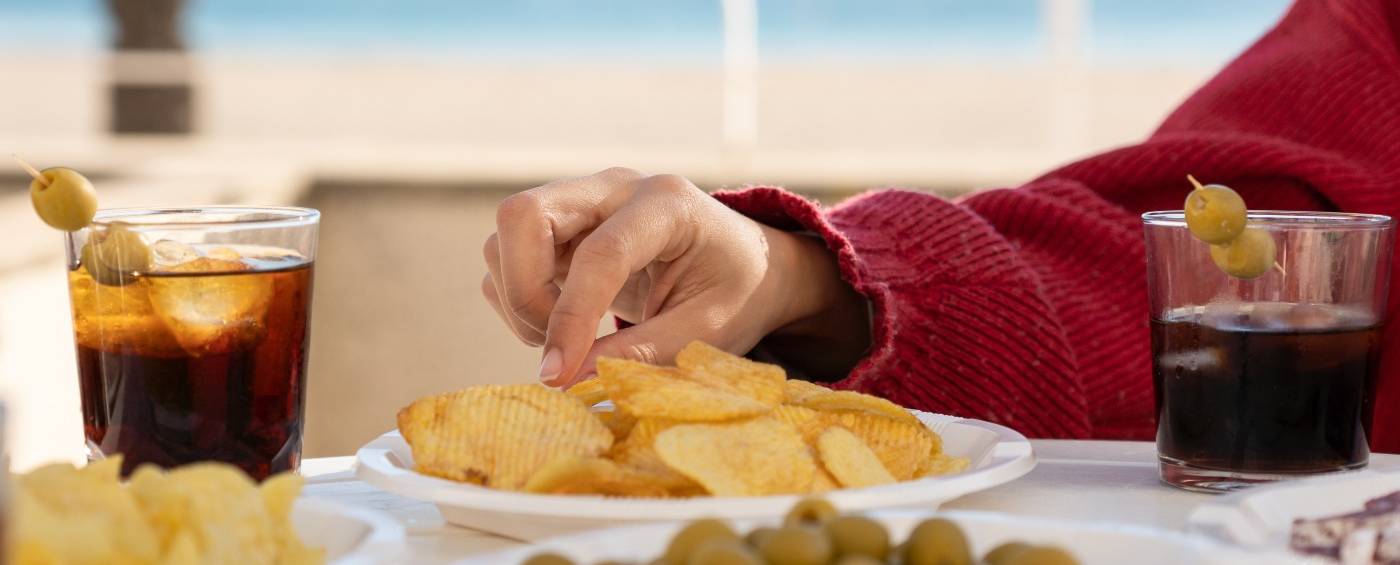Aperitif: what is it and where does it come from?
In this article, we tell you what an aperitif is and where it comes from. Find out what types of aperitifs there are and which are the most popular.

The aperitif, that delicious tradition that precedes the main meal, has evolved over the centuries to become a gastronomic ritual appreciated all over the world. This brief but essential moment before the main meal or dinner not only whets the appetite, but also offers a unique opportunity to explore flavours, textures and culinary experiences.
The word ‘aperitif’ comes from the Latin ‘apertivus’, which means to open. Its original purpose was just that: to whet the appetite before the meal. This tradition is rooted in ancient Rome, where drinks were served before feasts to 'open the stomach'. Over the centuries, these drinks were joined by small snacks, which at first were basic, but gradually became more elaborate and sophisticated.
The real revolution of the aperitif came in the 19th century when sharing this moment before the main meal of the day became an unmissable social event, largely due to the birth in Italy of the spiced cocktail that we know as vermouth. So much so that in many areas, the Spanish expression ‘tomar el vermú’ (grab a vermouth) is used to refer to the act of enjoying an aperitif.
In some countries, aperitifs are only served on special dates or holidays and are not a daily ritual. In others, such as Spain, Portugal, France, Italy, Peru or Argentina, it’s a custom extended to any day of the week and forms part of the gastronomic culture as just another 'meal'.
Mission and content of an aperitif
- The purpose of an aperitif: the aperitif is not just intended to whet the appetite, but it’s also an opportunity to socialise and relax before the meal. It’s a time to enjoy the company of friends, work colleagues or family in a casual atmosphere. In some cultures, it’s also linked to the business and negotiation environment, such as networking over food and drinks or socialising with the team after a day’s work at an ‘afterwork’ event.
- Vermouth time: In many European countries, the aperitif is typically enjoyed in the early evening, usually between 6 pm and 9 pm. It’s a perfect time to get together after work and before dinner. In other places, as is the case in Spain, it’s usually enjoyed at midday, at weekends with family and friends, and also before preparing the main meal of the day, which is also a moment of sharing.
- What we drink: the most common drinks for an aperitif are vermouths, white or sparkling wines, light cocktails, beer, and in some places, even bitter liqueurs. Originally, these lighter and sweeter drinks prepared the stomach for the following dishes and stimulated the appetite of diners.
- What we eat: aperitif food can include a wide variety of foods, from olives, nuts and chips to small sandwiches, cold meats, cheeses and more elaborate snacks such as croquettes, empanadas or bruschetta. In each area, there are typical products for this time of the day and even these snacks can be adapted to seasonal fruits or vegetables or the social event.

A cada destino, su aperitivo
Este tentempié, que va ganando fieles poco a poco, no se limita a una región o cultura; al contrario, cada rincón del mundo ha contribuido con su propio toque a esta experiencia culinaria. Aquí tenemos algunos ejemplos:
- El antipasto italiano: Italia es la cuna del aperitivo moderno y nos ha regalado una maravillosa variedad de opciones. Desde el clásico licor spritz veneciano hasta la tabla de quesos y embutidos ahumados, todas las posibilidades están encaminadas a agradar a los paladares más exigentes y es que aperitivo italiano es un arte.
- Nuestras tapas made in Spain: aquí el aperitivo se presenta en forma de tapas, pequeñas porciones de
delicias como aceitunas rellenas, gambas al ajillo o patatas bravas. La cultura de compartir y socializar en torno a estos platos, si es posible al aire libre, es una parte fundamental de la vida en nuestro país. Por supuesto, en compañía de vino o cerveza. - Los petiscos portugueses: nuestros vecinos acostumbran a servirlos con vino de Oporto o vino verde y generalmente se preparan tomando como base el bacalao, las aceitunas marinadas o el queso curado.
- Los mezze de Medio Oriente: hummus, falafel o tabulé, entre otros, son platos típicos y sabrosos que se disfrutan con amigos y familiares en esta zona, acompañados de pan recién hecho.
- El otsumami japonés: aunque Japón es conocido principalmente por su cocina sofisticada y saludable, el otsumami o aperitivo es también una tradición importante. Las bebidas alcohólicas, como el sake, la cerveza o el shochu, se toman junto a pequeños bocados de pescado o brochetas, sobre todo como cierre de la jornada laboral.
What do you think about?
Share comments, opinions and tricks with the Community







